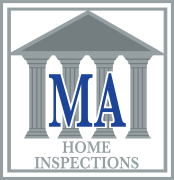Keeping Your Basement Dry: The Essential Guide to Sump Pumps
As a seasoned home inspector here in Central Ohio, I've seen firsthand the importance of a properly functioning sump pump in keeping basements dry and homes protected. While often overlooked, these simple devices serve as the unsung heroes of many homes, especially in areas of the cities prone to heavy rainfall and occasional flooding.
So, what exactly is a sump pump? In simple terms, it's a submersible pump installed in the lowest part of a basement or crawlspace. Its primary purpose? To prevent water from accumulating and flooding the area, safeguarding your property against water damage and mold growth.
Imagine this: a heavy downpour hits Central Ohio, saturating the ground around your home. Without a sump pump, this excess water could seep into your basement, wreaking havoc on your belongings and potentially compromising the structural integrity of your home. However, with a reliable sump pump in place, you can rest easy knowing that any incoming water will be promptly diverted away from your home, keeping your basement dry and your peace of mind intact.
But how do you know if your sump pump is up to the task? Regular testing is key. Here's a step-by-step guide to ensure your sump pump is ready when you need it most:
Visual Inspection: Start by visually inspecting your sump pump. Check for any signs of damage, such as cracks or corrosion, in the pump itself as well as the discharge pipe and surrounding area. Ensure that the float switch moves freely and that the pump is securely positioned in the sump pit.
Power Supply: Verify that the sump pump is properly connected to a power source. In the event of a power outage, consider installing a backup generator or battery-powered sump pump to ensure continuous operation during emergencies.
Test Run: Pour a bucket of water into the sump pit to simulate rising water levels. As the water level increases, the float switch should trigger the sump pump to activate automatically. Listen for the sound of the pump kicking in and observe its operation to ensure that it's effectively pumping water out of the pit.
Check Valve: Confirm that the check valve, located on the discharge pipe, is functioning correctly. This valve prevents water from flowing back into the sump pit once it's been pumped out, helping to maintain optimal pump efficiency.
Backup System: Consider installing a secondary sump pump or a water-powered backup system for added peace of mind, especially if your area is prone to frequent power outages or severe weather events.
By incorporating these simple steps into your regular home maintenance routine, you can ensure that your sump pump remains in peak condition, ready to spring into action whenever the need arises. Remember, proactive testing and maintenance are key to preventing costly water damage and safeguarding your home against unforeseen disasters.
In conclusion, a properly functioning sump pump is a crucial component of any home's waterproofing system, particularly in places across Central Ohio where heavy rains and occasional flooding is not uncommon. As your trusted home inspector here at M.A. Home Inspections, I've witnessed firsthand the difference that a reliable sump pump can make in protecting homeowners' investments and preserving the integrity of their properties. So, take the time to test your sump pump regularly and invest in proper maintenance to keep your basement dry and your home safe for years to come.

